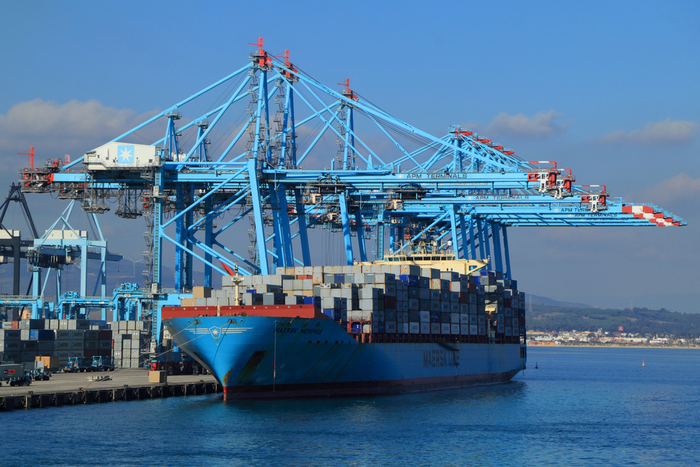
Asia-Europe volume has been improving since reaching peak pandemic impact in April. Photo credit: Shutterstock.com.
The Asia-Europe trade could be heading for a traditional, if subdued, peak season this year with fast-improving volumes bouncing back from the lows seen in April during the height of the coronavirus disease 2019 (COVID-19) lockdowns.
Asia to Europe container volume in June was 1.39 million TEU, down just 3.8 percent from the year-ago month, according to the latest data from Container Trades Statistics (CTS). The June volume shows a trade recovering from when volume in April fell by almost 20 percent year over year, followed by a decline of 14.5 percent in May.
Peter Sand, chief shipping analyst at BIMCO, said the Asia-Europe trade was heading for a peak season, but added, “I doubt that we will see the same volumes as in 2019, but we could reach those of 2018.”
He said a likely scenario was that volume will drop 5 percent from July through December compared with the second half of 2019. “We see a relative improvement in the second half compared to the first half,” Sand said. “COVID-19 will not lock up the world’s population again.”
Sea-Intelligence Maritime Consulting noted in its latest Sunday Spotlight newsletter that although the CTS data showed the Asia-Europe trade to be past the peak impact of the pandemic, the demand situation remained “highly negative,” with global market volume having declined by 5.7 million TEU in the first half compared with the first six months of 2019.
IHS Markit has forecast container volume on Asia to Europe and Mediterranean routes in 2020 will be 16.19 million TEU, a 2.6 percent year-over-year increase.
Sand pointed out that demand in Europe has not recovered despite the 50-plus level manufacturing PMI numbers. The IHS Markit Europe Sector PMI shows that of the 20 industry sectors monitored, 17 registered output growth.
“Job numbers remain a major concern to us and limit the prospects of containerized goods imports,” he said. “Improvements in volume can be seen, but it doesn’t mean that we are back to a pre-COVID-19 market.”
Rates on the rise
While volume continues to build, spot rates are sustaining levels well above those of last year as carriers keep a tight grip on capacity, announcing the blanking of 189 blank sailings through September, according to Sea-Intelligence. However, Asia-Europe has seen 18 of the scheduled blanked sailings reactivated in the past few weeks.
The strong demand for limited capacity saw Asia-North Europe rates reach $910 per TEU last week, 32 percent higher than during the same week last year. And at $940 per TEU, the Asia-Mediterranean rate was 33 percent higher, according to the Shanghai Containerized Freight Index (SCFI). The weekly rate movements are tracked at the JOC Shipping & Logistics Pricing Hub.
Several carriers have announced a round of freight all kinds (FAK) rate increases for Aug. 15 and peak season surcharges, hoping to capitalize on the demand.
“No doubt we could see rates go up by a small margin, but we expect no more than that,” Sand said. “The jump in rates seen on US-bound trades have been more significant. The Europe-bound development has been more gradual.”
Overshadowing the Asia-Europe trade are regular outbreaks of the coronavirus that are being reported in Europe, resulting in targeted regional lockdowns. Shippers are reluctant to import large volumes from China for fear that a second wave of the coronavirus could lead to more widespread lockdown measures, said Tony Cole, head of supply chain services at UK-based forwarder Davies Turner and Co.
Cole told JOC.com that volume was recovering on the trades out of Asia and space was tight because of the high level of blank sailings, but significant uncertainty prevailed in the market.
“What we can’t see is how strong the market will be in terms of expected volume coming through,” he said. “Our customers are telling us that they have no major volume plans over the next quarter, so we are not expecting major peaks or troughs, but it is hard to be certain.”
Contact Greg Knowler at [email protected] and follow him on Twitter: @greg_knowler.

